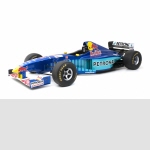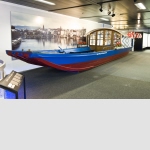Collection Online
Portfolio
-

-
- Sauber Petronas C16
Switzerland 1997
From driver to designer
Peter Sauber built his first ...
- PP Sauber AG (Sauber Motorsport AG, Red Bull Sauber AG, Sauber Petronas AG) (1970 - 2005), Betreiber/in, Hersteller/in, sign.
Sauber Petronas Engineering AG (*1995), Engine manufacturer, sign.
Herbert Johnny Paul (*1964), Racing driver, sign.
- Inv. Nr. VHS-5936
- more
-
-

-
- Ferryboat “Vogel Gryff” of the Basel Klingental Ferry Service, built 1962
From Greater- ...
- Fähri-Verein Basel (Verein Freunde Basler Fähren) (1974), Model operator, archivalisch belegt
Johann Waldmeier AG Bootbau und Sport (1974), Model manufacturer, archivalisch belegt
- Inv. Nr. VHS-9157
- more
-

